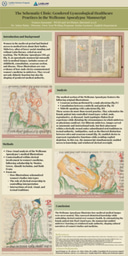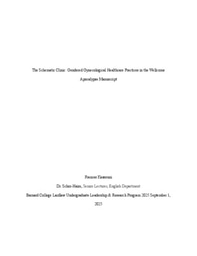Visiting the New York Academy of Medicine
Working in medieval studies has taught me that sometimes the most valuable insights don’t come from well-known scholars or published texts, but from conversations with librarians and archivists. These are the people who know collections intimately; they are the ones who can point you toward a manuscript you didn’t know you needed, and share details invisible to the archive.
A few weeks ago, I visited the New York Academy of Medicine after corresponding with their rare books and manuscripts librarian. After our conversation, I was drawn to a Latin manuscript from around 1250, a collection of surgical and gynecological texts filled with marginalia and richly detailed illustrations of surgical instruments.
While I can’t share photos of the manuscript here, what struck me most wasn’t just the contents, but the manuscript as an object. It was the small signs of human contact over centuries: tiny doodles of scalpels and forceps in the margins, pages with illustrations cut out (by whom? when?), and the tactile experience of turning vellum pages that were alternately smooth and coarse. I had learned about these material aspects of parchment in an art history class, but this was my first time feeling it myself.
Medieval studies can often seem daunting, even inaccessible. Yet, more libraries and institutions like the NYAM are opening their collections, not just to scholars, but to anyone who’s curious. And as more manuscripts are digitized, the distance between us and these texts grows smaller. I am extremely grateful for the opportunity to visit this manuscript and library, and am excited to continue my analysis of other manuscripts that have been graciously digitized and made accessible by librarians beyond New York City.


Please sign in
If you are a registered user on Laidlaw Scholars Network, please sign in